#prehistoric sea
Text
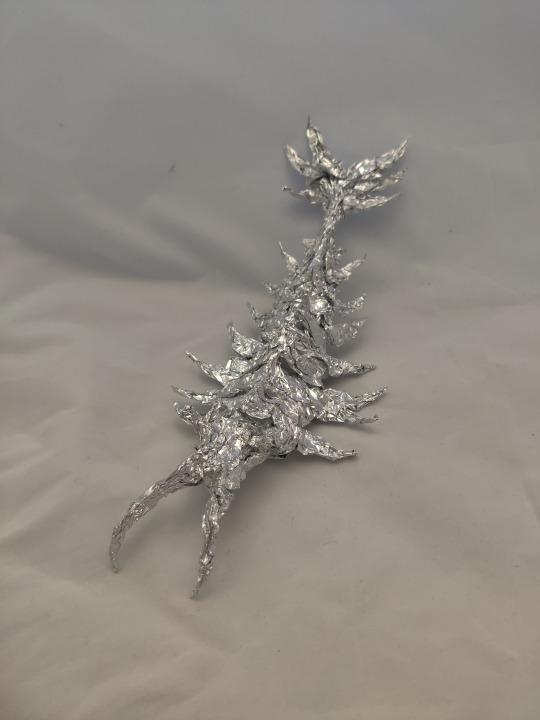
Anomalocaris - Aluminum Foil Sculpture
#anomalocaris#anomalocaris art#prehistoric#cambrian#fossil#sea creature#sea life#foil#sculpture#fanart
2K notes
·
View notes
Text

🌊DUNKLEOSTEUS 🪸
It was nigh time I made a sticker of my favorite wet beast 😌
RB's etc appreciated! 🙇
#dunkleosteus#Dunkleosteus#fishy#big fishy :)#prehistoric#fish#uhhhhhh#illustration#drawing#sticker#sticker art#art#artwork#sea#ocean#vinyl sticker
2K notes
·
View notes
Text

Sunlemon - LOST ANIMALS
#plush#plushie#plushies#plushblr#plushcore#toycore#soft toy#stuffed animals#sunlemon#lost animals#extinct animals#mammoth#steller's sea cow#dodo#japanese wolf#great auk#plush: prehistoric#plush: pachyderm#marine mammals#plush: bird#plush: wolf#plush: canine
1K notes
·
View notes
Text
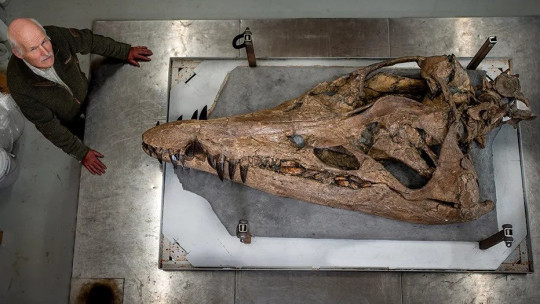
Gigantic Skull of Prehistoric Sea Monster Found on England’s ‘Jurassic Coast’
The remarkably well-preserved skull of a gigantic pliosaur, a prehistoric sea monster, has been discovered on a beach in the county of Dorset in southern England, and it could reveal secrets about these awe-inspiring creatures.
Pliosaurs dominated the oceans at a time when dinosaurs roamed the land. The unearthed fossil is about 150 million years old, almost 3 million years younger than any other pliosaur find. Researchers are analyzing the specimen to determine whether it could even be a species new to science.
Originally spotted in spring 2022, the fossil, along with its complicated excavation and ongoing scientific investigation, are now detailed in the upcoming BBC documentary “Attenborough and the Jurassic Sea Monster,” presented by legendary naturalist Sir David Attenborough, that will air February 14 on PBS.


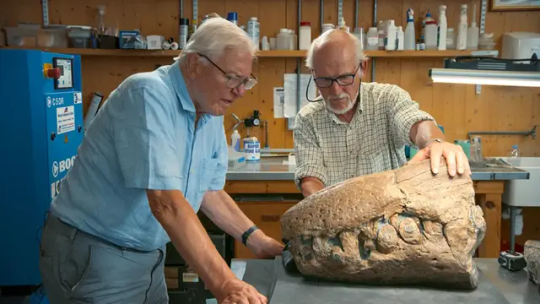
Such was the enormous size of the carnivorous marine reptile that the skull, excavated from a cliff along Dorset’s “Jurassic Coast,” is almost 2 meters (6.6 feet) long. In its fossilized form, the specimen weighs over half a metric ton. Pliosaurs species could grow to 15 meters (50 feet) in length, according to Encyclopaedia Britannica.
The fossil was buried deep in the cliff, about 11 meters (36 feet) above the ground and 15 meters (49 feet) down the cliff, local paleontologist Steve Etches, who helped uncover it, said in a video call.
Extracting it proved a perilous task, one fraught with danger as a crew raced against the clock during a window of good weather before summer storms closed in and the cliff eroded, possibly taking the rare and significant fossil with it.
Etches first learned of the fossil’s existence when his friend Philip Jacobs called him after coming across the pliosaur’s snout on the beach. Right from the start, they were “quite excited, because its jaws closed together which indicates (the fossil) is complete,” Etches said.
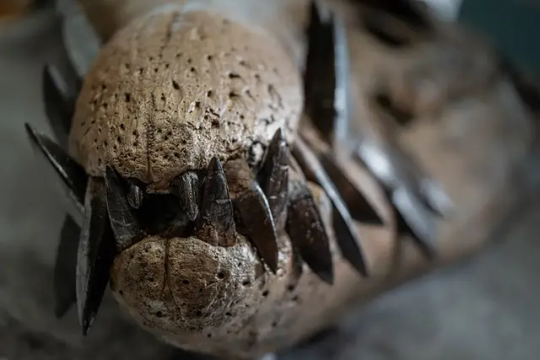

After using drones to map the cliff and identify the rest of the pliosaur’s precise position, Etches and his team embarked on a three-week operation, chiseling into the cliff while suspended in midair.
“It’s a miracle we got it out,” he said, “because we had one last day to get this thing out, which we did at 9:30 p.m.”
Etches took on the task of painstakingly restoring the skull. There was a time he found “very disillusioning” as the mud, and bone, had cracked, but “over the following days and weeks, it was a case of …, like a jigsaw, putting it all back. It took a long time but every bit of bone we got back in.”
It’s a “freak of nature” that this fossil remains in such good condition, Etches added. “It died in the right environment, there was a lot of sedimentation … so when it died and went down to the seafloor, it got buried quite quickly.”
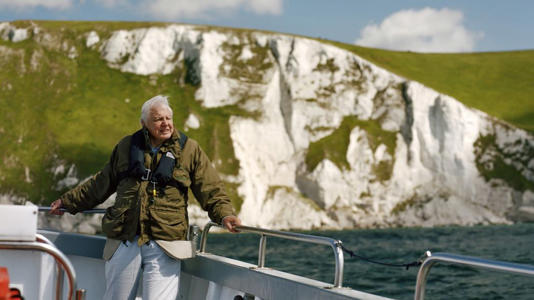
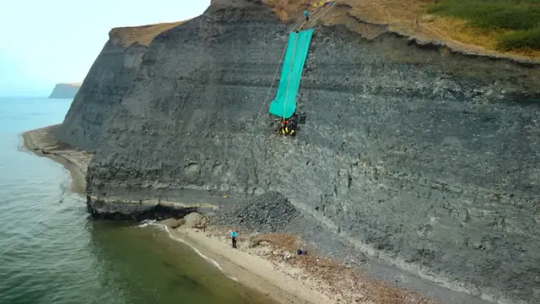

Fearsome top predator of the seas
The nearly intact fossil illuminates the characteristics that made the pliosaur a truly fearsome predator, hunting prey such as the dolphinlike ichthyosaur. The apex predator with huge razor-sharp teeth used a variety of senses, including sensory pits still visible on its skull that may have allowed it to detect changes in water pressure, according to the documentary.
The pliosaur had a bite twice as powerful as a saltwater crocodile, which has the world’s most powerful jaws today, according to Emily Rayfield, a professor of paleobiology at the University of Bristol in the United Kingdom who appeared in the documentary. The prehistoric marine predator would have been able to cut into a car, she said.
Andre Rowe, a postdoctoral research associate of paleobiology at the University of Bristol, added that “the animal would have been so massive that I think it would have been able to prey effectively on anything that was unfortunate enough to be in its space.”
By Issy Ronald.
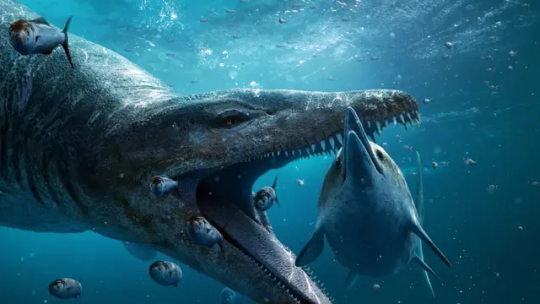
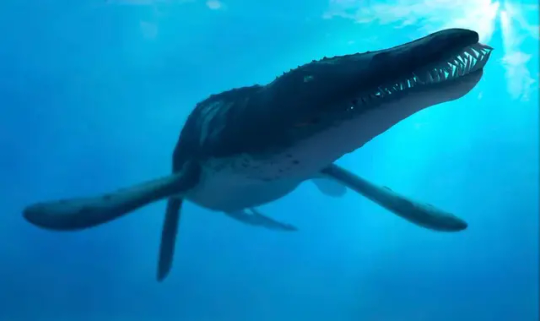
#Gigantic Skull of Prehistoric Sea Monster Found on England’s ‘Jurassic Coast’#Dorset England#pliosaur#jurassic#fossil#prehistoric#dinosaur#paleobiology#palaeontologists#archaeology#archeolgst#history#history news#ancient history#Sir David Attenborough#nature#naturalist
585 notes
·
View notes
Photo
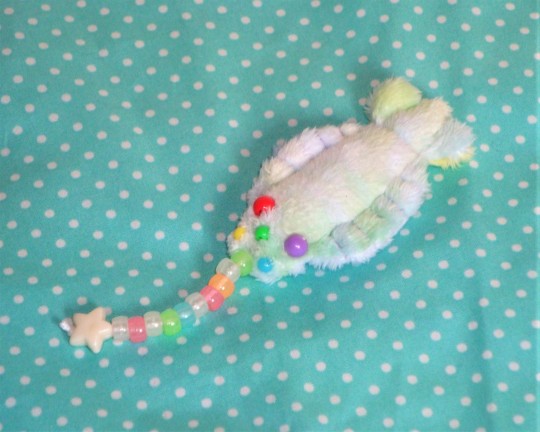
Tiny little silly opabinia with a beaded trunk-thing, made in June 2022
#opabinia#prehistoric#sea creature#bugs#sewn by me#artist plush#plushie#toys#white#pastel colour#rainbow
7K notes
·
View notes
Text
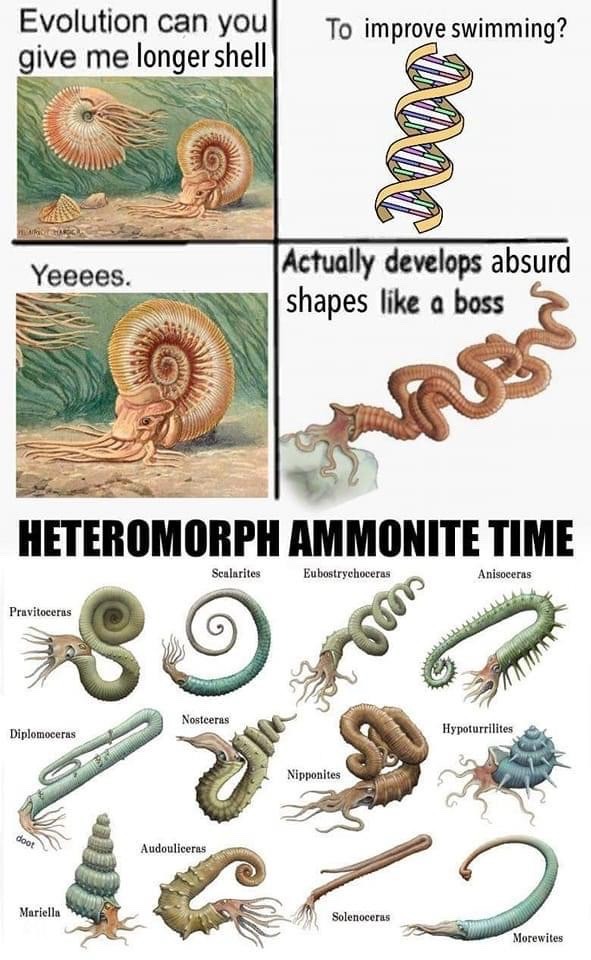
#ammonite#paleontology#memes#cephalopod#evolution#prehistoric#evolution memes#sea creatures#prehistoric memes#mollusc#mollusk#marine biology#there are many benefits to being a marine biologist#ocean#ammonites#molluscs#educational#meme#Cephalopoda#Ammonoids#Evolution Can You Give Me memes
9K notes
·
View notes
Text

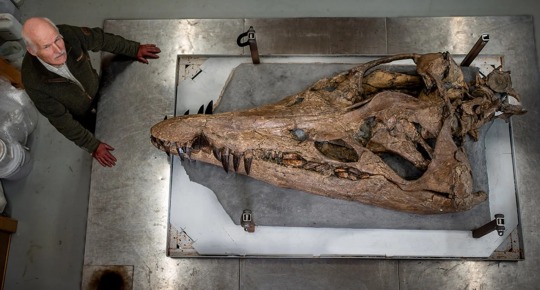


Fish heads
#pliosaur#archeology#dinosaurs#fish heads#rolly polly fish heads#marine biology#paleontology#sea monsters#sharks#prehistoric sharks#fish lizard#giant fish lizard
269 notes
·
View notes
Text


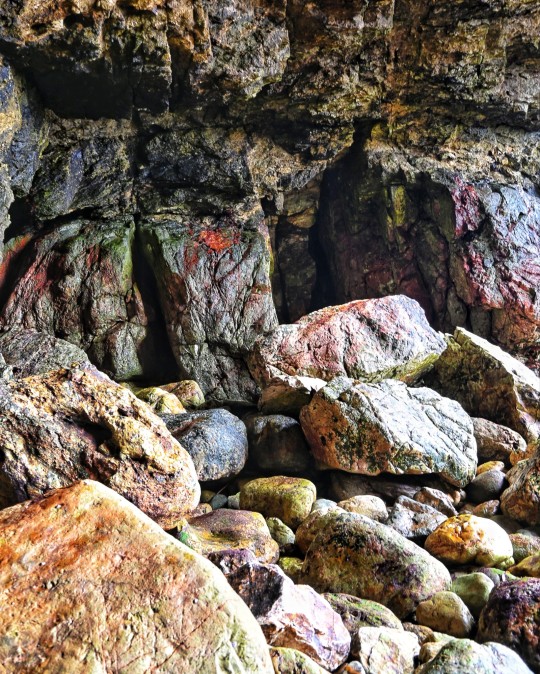






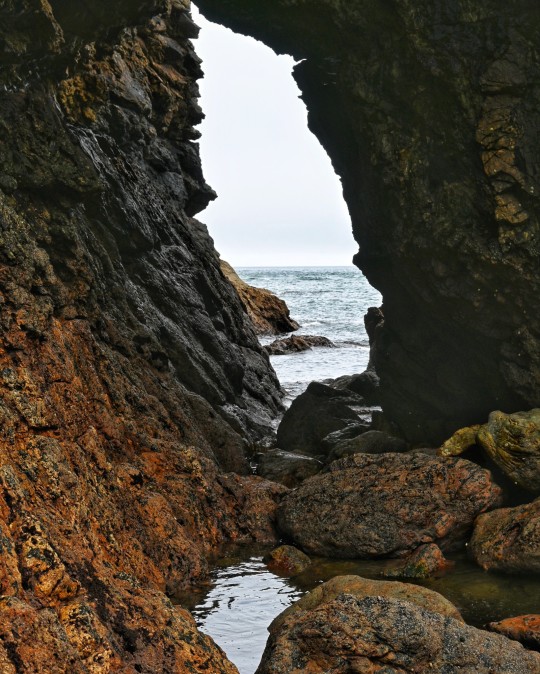
Sea Caves at Ynys y Fydlyn Iron Age Promontory Fort, Anglesey, Wales
#ice age#stone age#bronze age#copper age#iron age#neolithic#mesolithic#calcholithic#paleolithic#prehistoric#prehistory#sea caves#cave#coastal#coastline#tides#archaeology#shoreline#wales#ancient sites
535 notes
·
View notes
Text
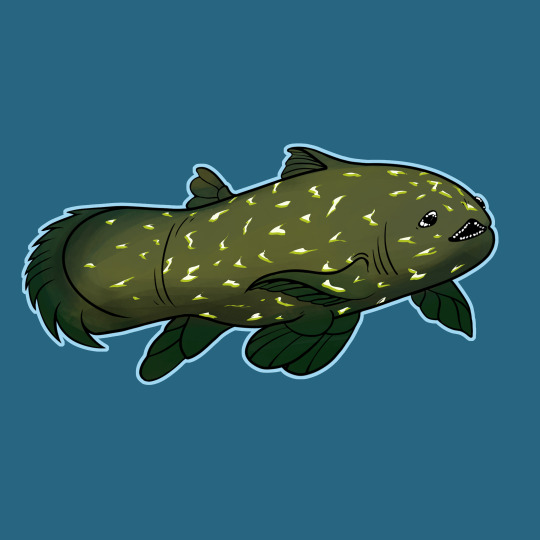



Squart here bringing you the goods from the Twilight Zone. Things are starting to get freaky where the sunlight doesn't reach.
-Coelacanths were thought to be extinct for a while, but scientists found living specimens chilling in the deep, relatively physically unchanged from 400 million years ago.
-Cuttlefish have a unique bone in their body to control buoyancy called the cuttle bone.
-Goblin shark jaws can shoot out to catch their prey.
-The telescope fish can reach about 20 cm in length, thankfully not more. Can you imagine a 6 foot beast with that face swimming after you?
Want merch? Check our shop!
#art#sea art#ocean#deep sea#twilight zone#telescope fish#gigantura chuni#goblin shark#shark art#cuttlefish#cephalopod#sea creatures#marine biology#marine animals#marine life#coelacanth#paleoart#prehistoric#fish
745 notes
·
View notes
Text

Fishy things I drew!
Also good news! I’m done with the linguistics faculty! History and archeology faculty is my new friend starting next year! :D
#paleoart#prehistoric#ammonite#underwater creatures#sea animals#illustration#art#science fiction#creature design#character design#procreate#speculative biology#speculative zoology
121 notes
·
View notes
Text

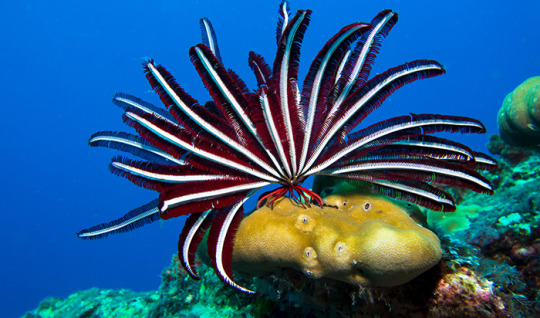
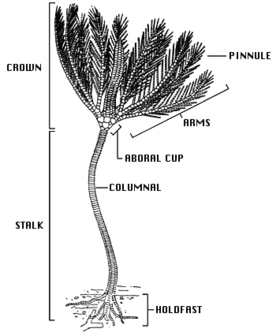
Star feathers are unique, they have high resemblance to pre-historic aquatic fauna; plants. Just like horseshoe crabs, their existence as a subset of species dates back to millenniums.
These are mobile versions of crinoids, that's a member of animalia (animal organisms), their original predecessors that came first --- the prehistoric plant-versions of crinoids that were rooted in the sea's sand as shown in the bottom figure were also animalia, but have differences in mobility. The rooted plant crinoids are among the oldest prehistoric members of lifeforms that dates back to even before the Cambrian explosion period.
Fossils of crinoids are often seen in fossil marketplaces, alongside fake's, but these more recent versions of crinoids which have genetically adapted through evolution to thrive and live outside of the sand and actually swim amongst other fish, it was a characteristic often seen in the ocean's habitat.
────────────────────────────────────────────
⇾ Follow my page for more epic, silly and boomblu content; share so I can grow if you wish, and come visit my other socials at my Linktree [Just click the word Linktree, it's hyperlinked :)]. ⇽
Check out the rest of my posts too!!! A lot of them are underrated. ;o Like everything you find interesting if you want. :3
Remember, you can find all of my socials here (click the word [here], it's hyperlinked (。◕‿‿◕。) For the plain link; here it is: https://lynkfire.com/Gliphel&Glyph%20LLC%20Incorperated
Also; if you prefer Linktree, it's here.
#aquatic#aquatic life#fish#fishposting#fishblr#marine#sea creatures#sea#ocean#water#ocean life#oceancore#underwater#feather star#crinoid#prehistoric#paleontology#marine life#cute animals#sea animals#dinosaur#animal#animals#organism
304 notes
·
View notes
Text
Mega-discovery Alert! Scientists have uncovered Europe's oldest known megastructure beneath the Bay of Mecklenburg, Germany. The Stone Age 'Blinkerwall,' nearly 1km long, dates back almost 11,000 years, hinting at ingenious prehistoric hunting strategies.
62 notes
·
View notes
Text

Megalodon by Esther Van Hulsen.
97 notes
·
View notes
Text
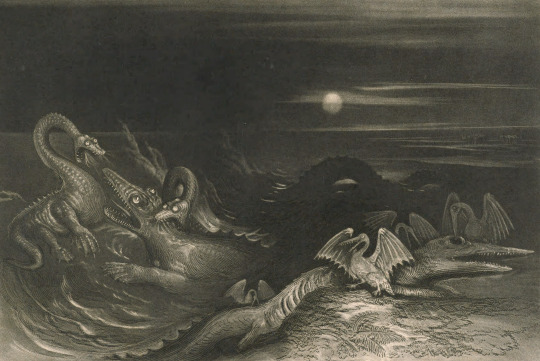
Frontispiece. The book of the great sea-dragons. 1840. The author tries to reconcile the discovery of dinosaur fossils with what the Bible says.
Internet Archive.
#bible#beasts#sea dragon#dinosaurs#paleontology#primeval#prehistoric times#nemfrog#1840#19th century
449 notes
·
View notes
Text
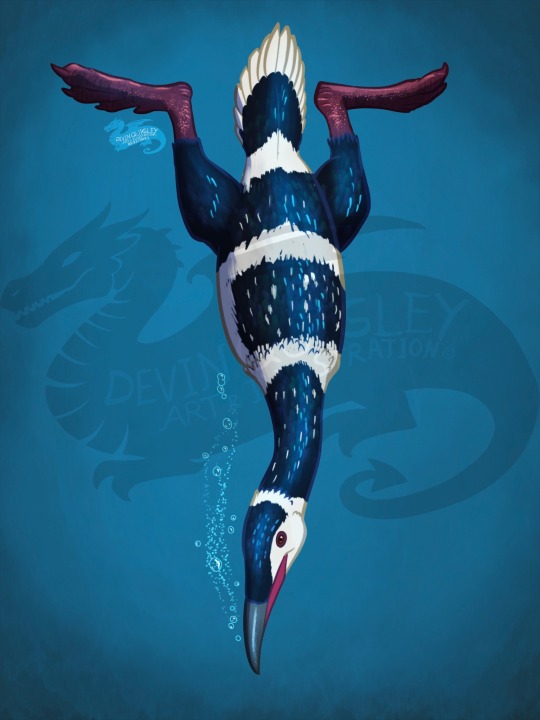
Paleovember 2023, Hesperornis!
Dating back to the Late Cretaceous (and possibly right up to the end of the period), Hesperornis was a flightless, cormorant-like bird that measured up to 6 feet long. It was a marine creature, swimming in the Western Interior Seaway that stretched from Canada, through Kansas, and into Mexico, and had to deal with all of the other marine horrors that swam through there as well. Being on the small side in this nightmare aquarium, Hesperornis survived by being agile in the water, while keeping itself sustained with a beak lined with needle-sharp teeth. Unlike penguins, it wouldn't have been able to walk on it's hind legs, and probably hauled itself on it's belly onto shore like a seal.
#cretaceous period#Hesperornis#bird#sea birds#paleontology#paleoart#Paleovember#illustration#art#artwork#digitalart#drawing#animal art#procreate#prehistoric#artist on tumblr
80 notes
·
View notes
Photo


Nom Nom (he/him)
Rainbow anomalocaris sewn by me in April 2022
#anomalocaris#cambrian#prehistoric#Thylacereal#artist plush#sewn by me#plushie#toys#rainbow#bright colour#beige#toy with accessories#bugs#sea creature#oh I missed it in these pics but it’s worth saying that nom nom’s mouth is a button#favourites!
5K notes
·
View notes